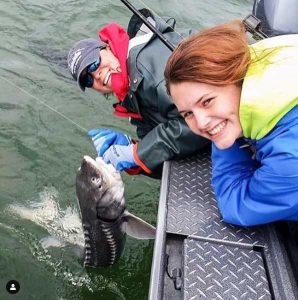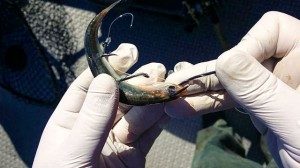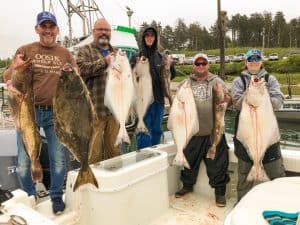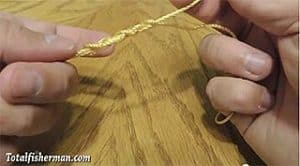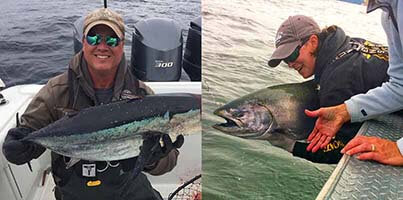Check out our Astoria Fishing Charters and Washington Halibut Charters
WDFW NEWS RELEASE
Washington Department of Fish and Wildlife
600 Capitol Way North, Olympia, WA 98501-1091
http://wdfw.wa.gov/
February 28, 2011
Contact: Dan Ayers, WDFW (360) 249-4628
Barb Maynes, ONP (360) 565-3005
New round of razor clam digs tentatively set for March, April
OLYMPIA – The Washington Department of Fish and Wildlife (WDFW) plans to open ocean beaches to razor clam digging for several days in March and April if marine toxin tests show the clams are safe to eat.
WDFW will announce the results of those tests about a week before each dig is scheduled to start.
The March dig is tentatively scheduled to begin after noon Saturday, March 19, then switch to morning hours March 20-22. Under that plan, digging will be allowed at four beaches – Long Beach, Twin Harbors, Copalis and Mocrocks – March 19-20, then continue at two beaches – Long Beach and Twin Harbors – March 21-22.
No digging will be allowed before noon March 19 or after noon March 20-22.
“We’re planning this opening at the time of year when the best tides for digging razor clams switch from the evening to the morning,” said Dan Ayres, WDFW coastal shellfish manager. “It’s a little tricky from a scheduling standpoint, but it does provide an opportunity for back-to-back digs the evening of Saturday, March 19, and the morning of Sunday, March 20.”
The fifth annual Ocean Shores Razor Clam Festival, which includes a chowder cookoff, is also scheduled March 19. Information on the festival is available at http://www.2011clams.com/ .
Proposed digging days and low tides for March are:
- Saturday, March 19, 7:04 p.m. (-0.1 ft); Long Beach, Twin Harbors, Copalis, Mocrocks.
- Sunday, March 20, 7:36 a.m. (-0.5 ft); Long Beach, Twin Harbors, Copalis, Mocrocks.
- Monday, March 21, 8:23 a.m. (-0.9 ft); Long Beach, Twin Harbors
- Tuesday March 22, 9:12 a.m. (-1.0 ft); Long Beach, Twin Harbors
In April, WDFW plans to open Long Beach and Twin Harbors for digging April 7-9 until noon each day if marine toxin tests show the clams are safe to eat. Proposed digging days and low tides in April are:
- Thursday, April 7, 9:37 a.m. (0.1 ft.); Long Beach, Twin Harbors
- Friday, April 8, 10:19 a.m., (0.2 ft.); Long Beach, Twin Harbors
- Saturday, April 9, 11:07 a.m. (0.4 ft.); Long Beach, Twin Harbors
Kalaloch Beach will remain closed to razor-clam digging until further notice for an assessment of the clam population on the beach. The beach, located inside Olympic National Park, is managed by the National Park Service.
On the other beaches, harvesters may take no more than 15 razor clams and must keep the first 15 taken, regardless of size or condition. Each digger’s limit must be kept in a separate container.
Noting that 2010-11 state fishing licenses expire March 31, Ayres reminds diggers age 15 or older that they must purchase a 2011-12 license to participate in the April opening. Various licenses, ranging from a three-day razor-clam license to a multi-species combination license, are avaiIable online (https://fishhunt.dfw.wa.gov/ ), by phone (1-866-246-9453) and from sporting goods stores and other retail license dealers around the state.
“We plan to announce additional digging opportunities later in spring, so diggers may want to take that into account when they go to purchase a license,” Ayres said.
Diggers should also be aware that Kalaloch Beach will remain closed to razor-clam digging until further notice for an assessment of the clam population on the beach. The beach, located inside Olympic National Park, is managed by the National Park Service.
The five razor-clam beaches in Washington include:
- Long Beach, which extends from the Columbia River to Leadbetter Point.
- Twin Harbors Beach, which extends from Cape Shoalwater to the south jetty at the mouth of Grays Harbor.
- Copalis Beach, which extends from the Grays Harbor north jetty to the Copalis River, and includes the Copalis, Ocean Shores, Oyhut, Ocean City and Copalis areas.
Mocrocks Beach, which extends from the Copalis River to the southern boundary of the Quinault Reservation near the Moclips River, including Iron Springs, Roosevelt Beach, Pacific Beach and Moclips.
